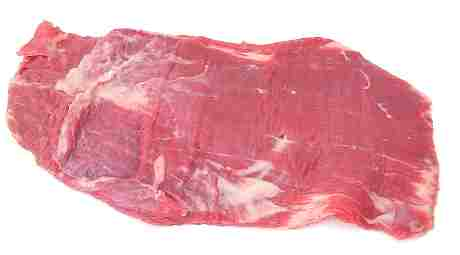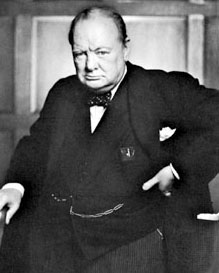On October 9th, 1999 the founding members of the Ginandtacos Corporation convened in Champaign, Illinois with the goal of getting drunk and eating tacos. Confounded by rising gin prices and pretentious college students attempting to tell us that Bombay Sapphire was “good gin” we set out to locate a cheaper gin. Having been previously offended by your mainstream cheap gin manufacturers (McCormick, Aristocrat, and Gordon’s come to mind) we decided to find a cheaper gin. Ed Burmila told a story of a cheap gin named “Crystal Palace” that sold for around $4.50 a bottle with a 1 dollar rebate coupon. Unfortunately, we were informed by local liquor stores that such shit was only sold “up north.”
This did not bother us. We knew that a cheaper gin could be found. After many long hours searching all the liquor stores we finally decided on a regal looking green bottle. This gin was none other than Sir Robert Burnett’s White Satin. When we purchased this bottle we had no idea the legacy that we were starting.

As chronicled on my now defunct university website this is what could have been heard from us that evening:
- "Officer, there is a toy gun in my shirt"
- "that pizza guy drank a lot of gin and got in his car to deliver more
pizza"
-will he ever know the impact he had on our lives?
- "why are those people waiting in line for Joes….and there are a lot
of them"
- "what gin could possibly be cheaper than Gordon's
London Dry……"
- "…..He is a knight, he can't possibly make bad gin"
- "He is only kind of my boyfriend."
And so it began. That Christmas, Mike and I purchased for Ed a case (12 bottles) or Sir Robert’s finest, thus utilizing bulk discounts to make it the single cheapest per bottle price on gin any of us have ever paid.
Over the years many things changed, but Sir Robert Burnett remained cheap. The simultaneous dirt-cheap price and fine flavor encouraged the ginandtacos.com staff to probe deeper into the mythology of this fine brand. Since 1990 the American version of this gin has been produced by Heaven Hill’s distilleries in Bardstown, Kentucky. (Known for manufacturing, distributing and marketing a fucking ton of shitty spirits) In 2002 Heaven Hill purchased the rights to distribute the gin worldwide (excepting Japan for some reason). Kentucky then became a premium source for London Dry Gin – and unfortunately leaving us with an inadequate “Heaven Hill” website to find out the history of this product.
The website seems to agree that the gin was first produced in 1770. However, the two websites seem confused as to whether a man named “Thomas Burnett” or “Robert Burnett” was the man that first developed this elixir of the gods. Our original thought was that possibly Thomas was Robert’s father, however that quickly faded into fear that Robert Burnett was actually a mythical figure and we had simply been fed lies from the Kentucky gin producers- not an altogether unlikely conclusion.
The first bit of evidence was the fact that Heaven Hill claimed that Robert Burnett perfected his recipe in 1770 when he was Lord Mayor of London.
buy clomiphene online buy clomiphene no prescription
This would have been a great story- if it were true. A quick search reveals no one with the last name of Burnett to have been Lord Mayor until the 1900’s and a list for 20 years around 1770 reveals no Robert or Thomas Burnett.
Lord Mayors of London
1759 Sir Thomas CHITTY
1760 Sir Mathew BLAKISTON
1761 Sir Samuel FLUDYER
1762 William BECKFORD
1763 William BRIDGEN
1764 Sir William STEPHENSON
1765 George NELSON
1766 Sir Robert KITE
1767 Thomas HARLEY
1768 Samuel TUMER
1769 William BECKFORD second term
1770 Barlow TRECOTHICK
1770 Brass CROSBY
1771 William NASH
1772 James TOWNSEND
1773 Frederick BULL
1774 John WILKES
1775 John SAWBRIDGE
1776 Sir Thomas HALLIFAX
1777 Sir James ESDAILE
1778 Samuel PLUMBE
1779 Brackley KENNETT
1780 Sir Watkin LEWES
Obviously this information was quite disheartening. How is it that the manufacturer of such a fine product could have lied to us in such a flagrant way? Did they not realize that a simple search of the internet would reveal their horrible falsehoods? The only logical conclusion was that they were misled by the British, no doubt in an attempt to make the Robert Burnett corporation seem more regal.Although feeling somewhat betrayed, I was not willing to give up. I needed to find out if Sir Robert Burnett actually existed. So I did what anyone in my position would have done. I signed up for a shady, temporary account at Ancestry.com.
Here is what my search revealed.
(All citations from the Times of London)
On June 2nd 1790. Robert Burnett Esq served as a steward at something called the “Constitutional Society.
” This society was celebrating “His Majesty’s birthday.” Tickets for this event were 5 “s”. I have no idea what denomination of money “s” is (shilling, sterling?) nor do I have any frame of reference to indicate whether 5 of them is dirt-cheap. What we do know is that the announcement makes reference to wine being included in the price- presumably gin was an extra cost.

In October of 1795 Sir Robert Burnett is given some kind of congratulation from the mayor of London for being the Sheriff of Middlefex…and treating his prisoners well. Although I was quite disappointed to find out that Robert Burnett was not the mayor himself, a sheriff is more or less as amusing.

Do you remember Robert Burnett Esq? Well, we find out that he is the oldest son of Sir Robert Burnett, and in joyous occasion for the Burnett family is married in 1795.

I have absolutely no idea what this means. It seems to indicate that Robert Burnett the junior has been given some kind of Lord status over a county of some sort. Although I am happy to see that the Burnett family is doing so well, I am disappointed that so far the only reference to spirituous beverages has been wine served at a constitutional society dinner.

In the late 1790’s England was attempting to militarize in preparation to fend off that little bastard Napoleon. It would seem that Sir Robert Burnett the senior and Robert Burnett Esq played a substantial role in recruitment into the armed forces. Here is a printed speech Sir Robert Burnett gave congratulating his wife and several other women for their recruitment efforts.

Here is the one we have all been waiting for. Some rough son of a bitch named Stack is apparently accused of forging a will of some fellow from the East India Company. Stack claims he is innocent, and that the other accused, a shady individual named Blakely (who had several aliases) forged the will in an attempt to pay of a debt to Stack. It is unclear what actually happened but it seems that a bar tab might have been involved.
Regardless, Robert Burnett comes to testify on the behalf of Stack, who apparently owned (owns?) a bar. And guess who one of his liquor distributors was? None other than Robert Burnett. We now know that Robert Burnett not only existed, but primary sources put him as a distributor of liquors. I am fairly certain that, in the 18th century, when you were selling liquor to “public houses” you were not simply a middleman, you were producing the stuff.
buy nolvadex online buy nolvadex no prescription
Now we are talking.

Although the Burnett family pops up several more times, this is the final entry I am going to give you. In 1819 Sir Robert Burnett has passed away and his estate is being leased. This is the advertisement. As least it can be said that while he lived, he lived well.

To summarize, we now know that
- Robert Burnett Jr. and Sir Robert Burnett were active in politics, however neither were mayor of London.
- The Burnett family was very active in military recruitment
- Most importantly, that the Burnett family dealt in liquors.
- Finally, Sir Robert Burnett had a pretty damn nice estate.
Unfortunately, none of my research resulted in specific reference to gin. This is primarily due to the fact that the only available source to me was the Times of London, although there might have been advertisements for Burnett’s Gin in the Times, they did not come through on the search. Someone with more experience in alcohol oriented history could possibly do better.
When contacted, Heaven Hill Distilleries did not respond to allegations that their history of Robert Burnett was inaccurate.
As a final note, when calling Ancestry.com to cancel my trial membership I was asked why I no longer wanted the service. Not wanting to say: "because it costs 100 dollars," I simply informed the fellow that it didn't suit my needs. When asked what those needs were, I politely informed him that I was doing research on important historical figures as they relate to my company- Ginandtacos.com.












